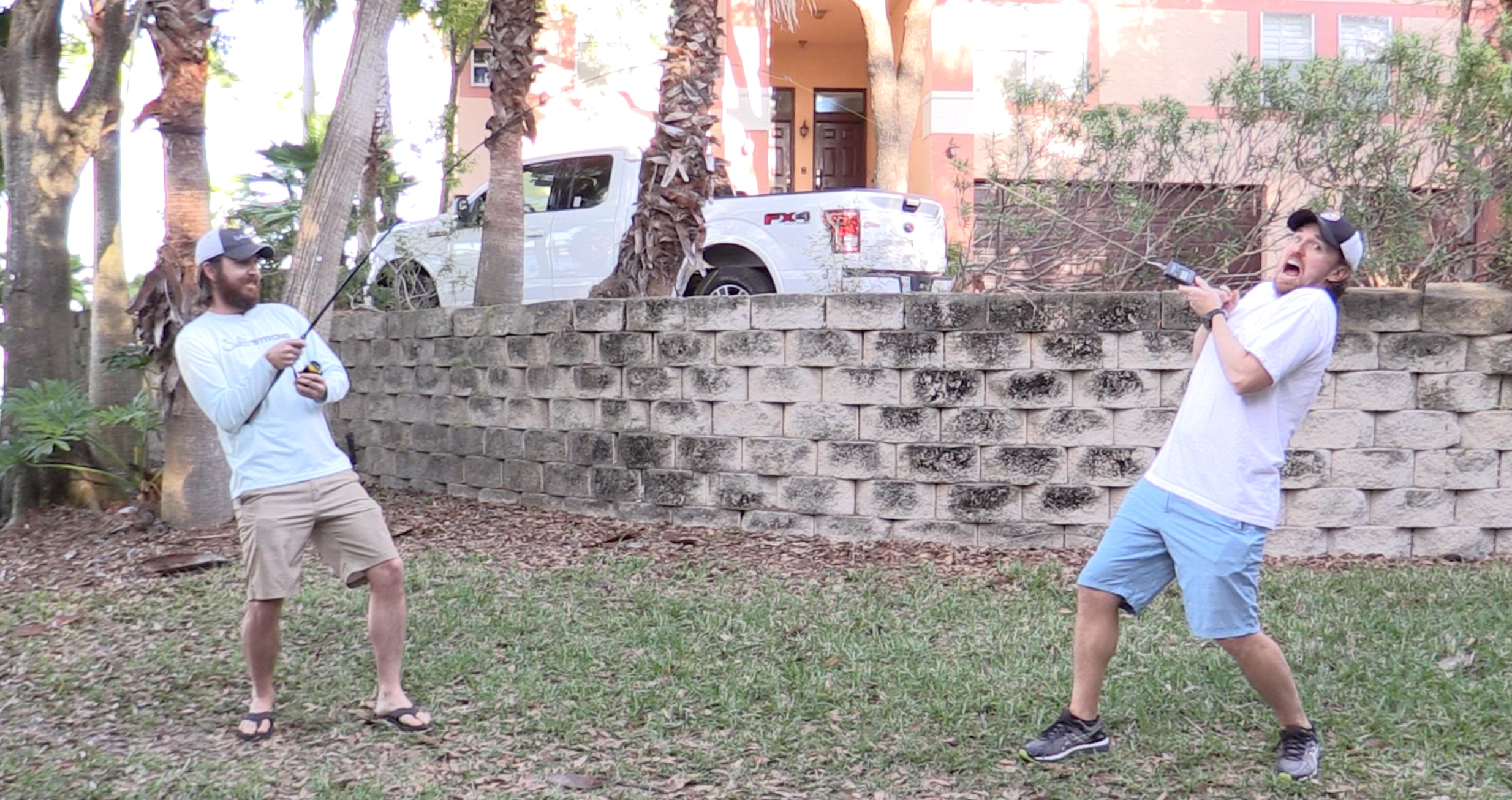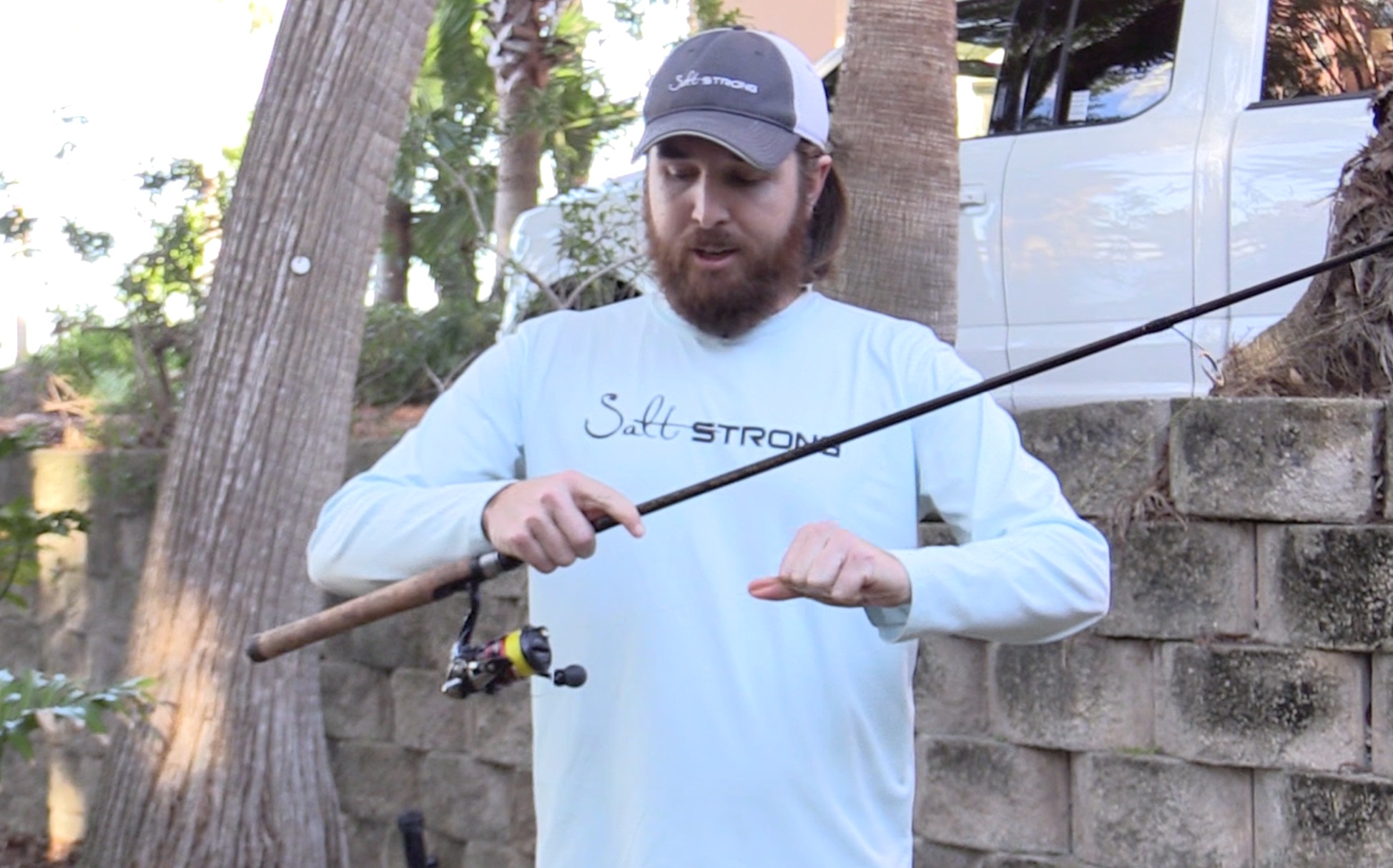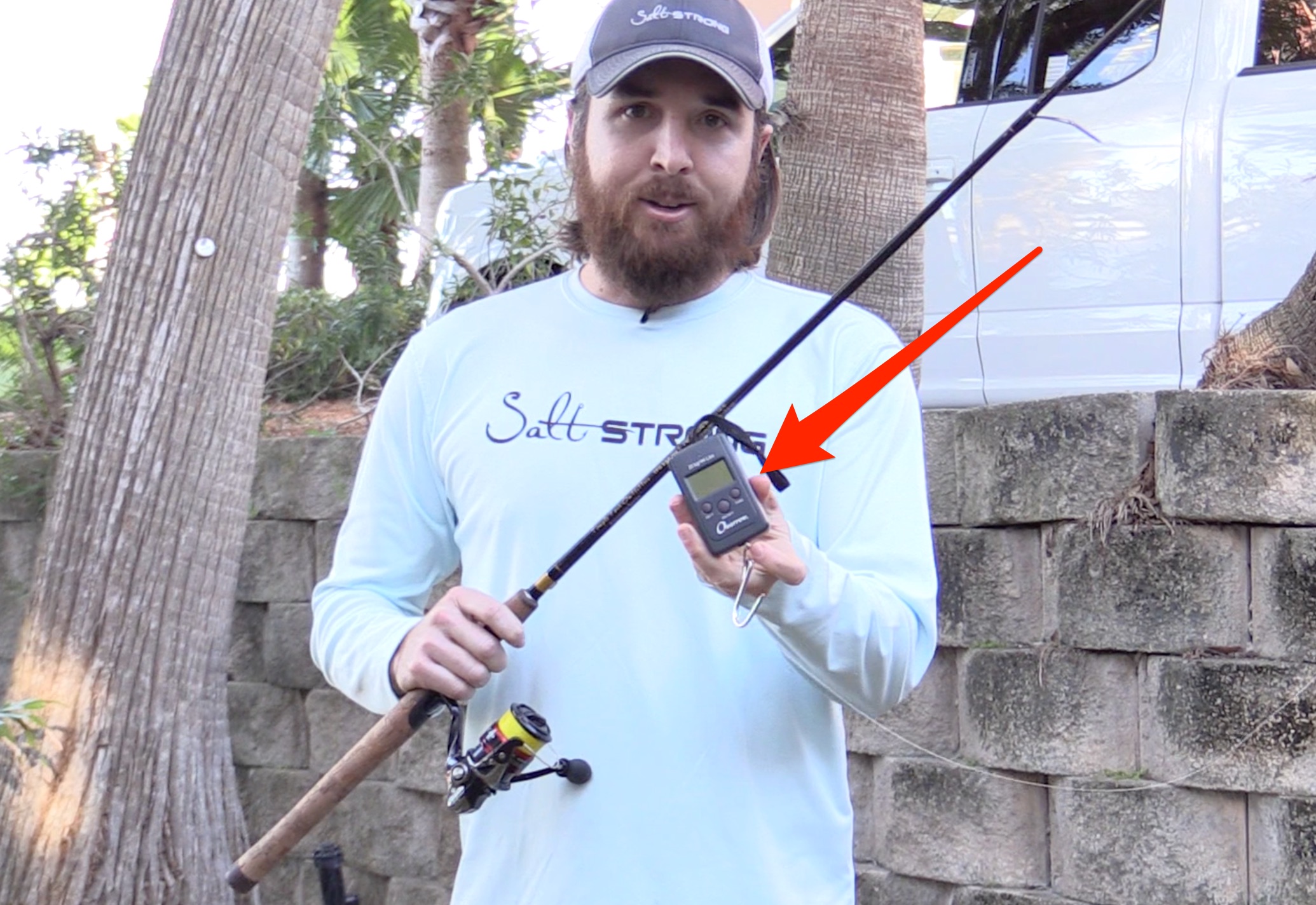What’s The Proper Drag Tension For A Fishing Reel?
- By: Luke Simonds
- on

One of the most overlooked factors in fishing that can make or break the day is the drag setting of a reel.
I can personally attest to this factor being overlooked by many anglers because I’ve fished for over 30 years and have never once actually tested the true tension of my drag…t has all been based on feel that has been carved into my memory after trial and error.
It has all been based on feel that has been carved into my memory after trial and error.
Worst of all, an improperly set drag can be the core reason that a fish of a lifetime got away with your favorite lure, and that is exactly what I experienced on multiple occasions as I was developing my “feel” for the proper tension.
So what exactly is the proper drag tension for a fishing reel?
And how can someone consistently achieve the proper setting without the trial and error of losing big fish?
This short article and associated video will answer both of these questions for you so that you don’t have to learn the drag setting lesson that hard way like I did.
What Is The Proper Tension For A Reel’s Drag?

After researching the interweb reading many articles and watching videos on this very subject, the recommendations seems to all stay within a narrow range…
The consensus is that a reel’s drag should be set at 20% to 30% of the lines strength rating.
At first glance, this seems to be low since that leaves a lot of strength on the table (especially for those of us who took the time to test out different knots to see which ones are truly the strongest… see yellow section below for knot test results).
But when considering the amount of drag that the water pulls on the line when a fighting fish is swimming at max speed, the low rating make more sense.
Yesterday, I actually tested the drag setting on my inshore reel that was 100% based on trial and error over 25+ years with a scale because I was very curious to see how it actually compared to the 20% to 30% range from the online educators.
Since the line I use for inshore fishing is 10 lbs, the recommended range is 2 to 3 lbs.
So I was pleased to see that my time-tested drag setting is 2.3 lbs, which is in the middle of the recommended range.
Note: If wondering how to handle big fish near heavy structure, then click here to see a trick that has helped me land big snook, redfish, grouper, etc. on light line when fishing around structure.
How To Check The True Tension Of Your Drag
The reason I never checked my reel’s drag is because I always assumed that some fancy equipment was needed so I never bothered doing it.
But that was far from the truth because it actually all can be done with just one piece of equipment that costs less than $10.

And it only takes a few minutes.
Once the reel’s drag setting is at the proper tension, then I recommend pulling it out with your hand several times to develop some muscle memory to how the tension feels so that you can accurately set it via hand going forward.
Watch the short video below to see how it’s done:
Conclusion
It is extremely important to properly set your reel’s drag before your first cast because you never know when a fish of a lifetime will bite.
And there’s nothing worse than losing a fish of a lifetime due to something basic like this that we have 100% control over.
Because although this factor seems minimal in the vast amount of factors that have to come together to land a great fish, the drag becomes one of the most important once that fish is hooked.
So if you have not already done so, make sure to truly test your drag to make sure it falls in the 20% to 30%
P.S. – If you think your angler friends would like this, please Tag them or Share this with them… Fish On!
Related Post: How To Get A Hooked Fish Out Of Structure Without Breaking Off
Related categories:
STOP WASTING TIME ON THE WATER!
Do what the “SMART ANGLERS” are doing and join the Insider Club.
Here’s what you’ll receive today when you join:
- Weekly fishing reports and TRENDS revealing exactly where you should fish every trip
- Weekly “spot dissection” videos that walk you through all the best spots in your area
- Exclusive fishing tips from the PROS you can’t find anywhere else
- Everything you need to start catching fish more consistently (regardless if you fish out of a boat, kayak, or land).










I believe proper drag setting has nothing to do with line strength or reel to give you the best chance of landing fish. It should be set at or just over the minimum needed to keep the rod loaded when line is c9ming off of your reel more drag when needed you can provide with your rod hand. Imho
Doesn’t the length and flex of the rod factor in?
I don’t believe the rod specs matter for setting the drag
Should the drag be set by the main line (braid) strength or the Leader strength (fluro)
Targets, False albicore, snook, reds.
Also Tarpon in the spring where heavier tackle is used
The drag should be set based on whichever line is the weakest… 20% to 30% of the weakest link is the general rule.
I have a follow up question on snook and reds in mangroves. I use 30lb braid with 25lb fluro. Fluro is lighter so it breaks instead of the braid and i can just re install new hook.
Question: your recommended reel drag seems light for mangroves. Snook will pull that line and tangle in the mangroves. To many times i have to get off the boat into the mangrove to release the fish. I find the tighter the drag gives me a chance to drag them out before they get tangled up in the bush.
I end up saving 90% of the snook but sometimes water is too deep for me to trod in or I just cant find the snook.
What do you suggest for a reel drag and line poundage for this kind of fishing
Thanks as always
Brian Moore
For heavier gear like that, you can get away with more drag… also, the better knots you use, the stronger you can go with the drag. The 20% to 30% range is the general recommendation that was likely made back when knots like the double uni were assumption. Since the FG knot can make that same connection ~30% stronger, it’s certainly not out of the question to go a bit more aggressive with the drag. If you do, I’d go with a mono leader to help ensure that the snook doesn’t chew through the leader with the stronger tension.
Never thought of mono for that application (being a fluro guy). I like it and will give it a try. Thanks as always
um,
so I fish a lot and this seems way to technical for pan or typical sport fish weighing 20 lbs or less. maybe for ocean fishing or cat fisherman this is a good idea but for smaller sport fishing there is a much easier way. when i go out fishing i check drag before first cast or drop if jigging or trolling or what not. there is a very easy way to check drag without a scale.
grab line nearest real and don’t tug or yank as to rip line but pull very quickly as fast as you would ever expect the fish to pull the line. if line brakes to much drag set less, if line pulls way easy then add drag until line brakes then back off or feels as though its about to break. if you don’t know then break line to get feel. i usally am pulling much faster then most of the fish ever pull.
the reason i set drag to almost point of break is that the rod will be taking on some of this acceleration of hook as this is what realy breaks line or looses fish. its not the weight of the fish but the acceleration of the hook as it is bitten at speed or as the fish excels or slows that determines drag setting. not enough drag you cant set and retain hook sett during acceleration and deceleration of hook.
setting the drag this way dose 2 things. first it sets drag and second ensures drag is working properly. on old cheap reals i find that the drag will gum up and grab and break line and never work properly as drag pulls unevenly, but with good quality reels they do get stiff and gum up but a couple of these good pulls and there ready to go if not then its usually time to clean or get knew real.
so i am not trying to start argument just explaining what i do as i have been avid fisherman since i was a kid and i realy like to help people catch more fish unless they are fishing in my spot. lol.
oh and by the way there are many times i need drag set way strong on bight to set set hook then loosen drag right away as fish is pulling rod tip down to keep fish from breaking line.
later Andrew K
Thanks for making time to leave the helpful comment Andrew!
This is going to sound nip picky but just follow for a bit as I explain:
If drag is set based on line break strength give how variable actual vs rated is should it not be on actual or at least close. After all we have plenty of test results online now.. If it was only a 10-20% variance no big deal even though that is a generous spread.
Take Luke’s Inshore setup of 10lb Power Pro and IIRC 30lb ish mono leader. His supposed range is 2-3lb drag with his set to 2.3lb. Issue is that 10lb PowerPro is not 10lb but 25lb+ actual test and his 30lb mono is likely between 33-50lb depending on brand. We know this from numerous tests conducted over the yrs and posted on the net. Point being his drag should be 5-7lb+ based on the guideline. Does not sound like much but as a percentage its HUGE.
Why this matters if we are going with stating a guideline is there are lines that are right on or close to its actual rated test. All the tournament lines as well as those claiming IGFA rating plus a few other brands and models.. Their 10lb line is actually 10lb line..
The drag can not logically be the same for line that breaks at 10lb as that which breaks at 25+lbs. Thats saying set drag based on line lb but make it the same as lines 2.5x+ the lb.
Yes I know I have deliberately made this more complicated than it should be but many see guidelines as rules and that’s how it gets spread.
With line manf choosing to have no standard we have popular brands and series with actual vs rated line strength varying over 180% for actual.. Makes it hard to even call something based off that a guideline.
Thus if its going to be a stated guideline it has to be based off something that has some semblance of consistency.. To me thats the online published break lb info.
Is it trival and this is making too much a todo about nothing? Then its no big deal if you change the guideline from set drag to 20-30% to 20-75%+ as that is how large the variation is.. If that’s the case then why bother even doing an article about it!?. Just say set drag some where under 75% the rating on the box to what feels right LOL
The issue is much more pronounced with lower lb rating line as a percentage.
Just like most generalized guidelines, there are always going to be some exceptions.
On top of the line’s breaking point being different than its rated strength, we also have to consider the fact that the knots used can significantly impact the actual breaking strength of the line.
So those who tie great knots that can allow for 2x breaking strength above the line’s rating can get more aggressive with the drag.
Use scales initially designed for archery. Spring balance, crude and with a tell tale.
If you dunk it, just wash it. “Toro Tamer” brand goes to 25lbs.
Most of my light gear is set from 9lbs to 15lbs. About 45% of the chosen top shot rating. Never had anything give on a fish. The blank manufacturer will give a line range and hopefully an optimum drag setting. Use that if possible. Without an optimum drag figure, buy something else. Rod is designed to work with a certain curve. Too heavy, new rod. Too light and the lever will be far too long, not working the rod action effectively.
Use a proper reel.
Pre-set a lever drag at home. Stars usually work best banged down but not rock aped.
I only carry an eggbeater if the regulations require it. “Acid” ringing gives the benefits but still enables you to use a proper reel with proper control.
Slow jigging is only reel and line. Rod just works the lure.
Set too light, you will loose fish before you can exert any control.
Bait running techniques excluded.
Finally, modern Japanese designed blanks start where historic blanks gave up.
You lean into your semi-fast action, then find at high loads, the action continues right back through the Fore Grip. Really reduces the leverage.
Rgds.
Malcolm Hayward.
Toro Tamer Drag Scale come in two models, a 25 lb. & 50 lb. Smaller one should be adequate unless using heavy offshore gear or using it to also weigh fish since its intended to do both.
Can you recommend a hand held 0-50# scale that will survive a momentary submersion in saltwater and where might I be able to find that scale?
I unfortunately don’t know of any scale that is waterproof.
I believe that drag should be set by the species you are targeting, and how you are fishing. The actual number of pounds is nearly irrelevant. For example, let’s assume your line break strength is enough to lift the weight of the buoyant fish out of the water. A 32 ounce snook can probably pull with more force than a 32 ounce red fish. So the drag should be set higher. The how you are fishing part is important because for example is if you are fishing from the end of pier high above the water because once you lift the buoyant fish out of the water if your drag is less than 32 ounces the fish’s weight will not allow you to raise the fish onto the pier, unless you tighten up the drag to more than 32 ounces. And who cares what that number is?
I realize that these questions are not coming from anyone who actually fishes because common sense would hopefully educate them.
The knots, one they can do them self, the drag sets according to the size of the reel & line & most all other questions… go fishing & learn, we (fisholics) all make mistakes & those mistakes we usually don’t do again.
we make fewer & lesser ones.
Fish on.
Good point. I live on Indian River Lagoon in Grant, and I lost at least four 20lb+ snook on Top Water due to- no leader, inefficient knots, wrapped around barnacle encrusted pilings, and line too light. I upped my braid from 10# to 20#, and the same day lost a SNOOK OF A LIFETIME (last night). I think because of a bad knot tied to the lure.
Tonight, I’m going with 30# braid with a 60# mono leader and employing knots from the above videos. Tonight, if I lose another monster fish, I’m taking up golf.
Best of luck to you out there tonight!